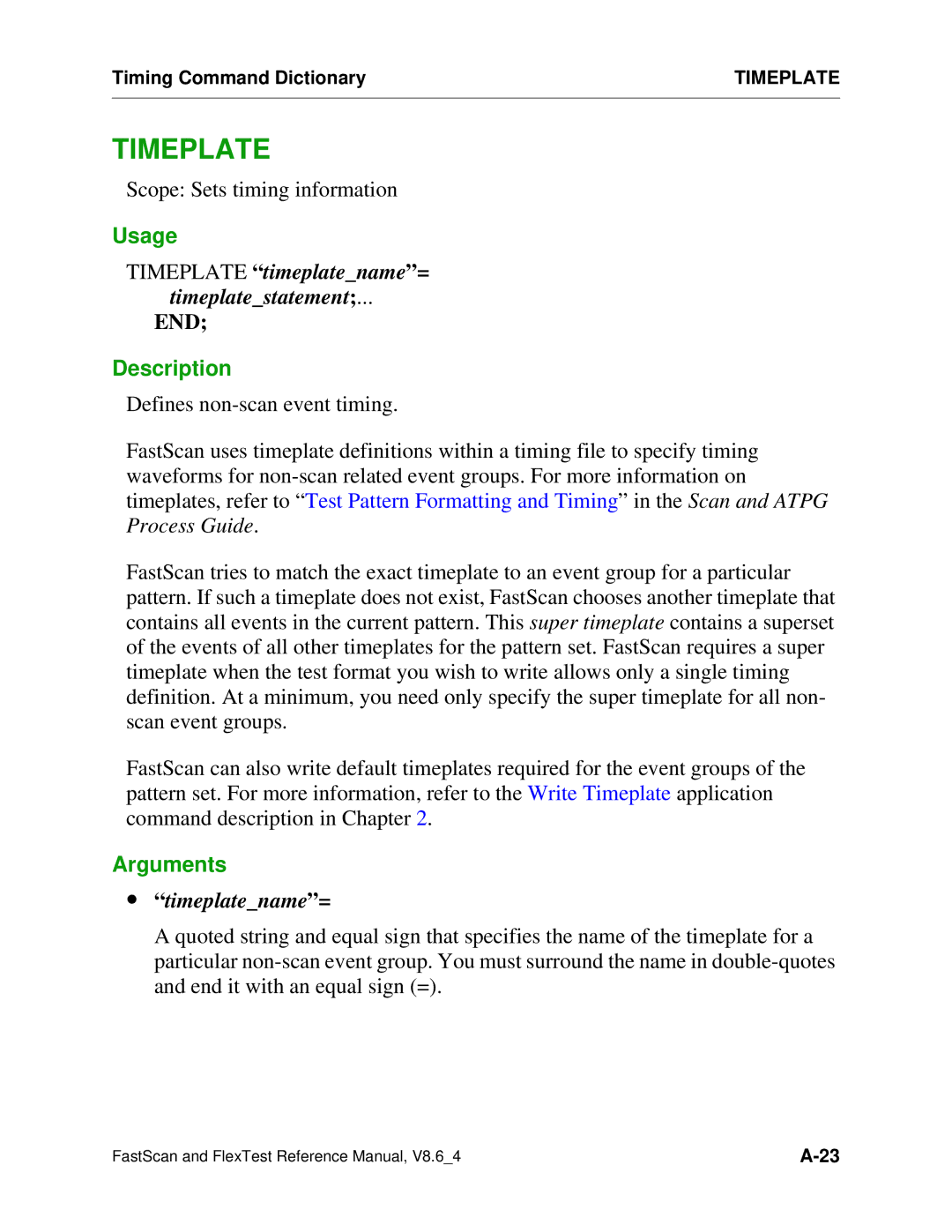Timing Command Dictionary | TIMEPLATE |
|
|
TIMEPLATE
Scope: Sets timing information
Usage
TIMEPLATE “ timeplate_name”=
timeplate_statement;...
END;
Description
Defines
FastScan uses timeplate definitions within a timing file to specify timing waveforms for
FastScan tries to match the exact timeplate to an event group for a particular pattern. If such a timeplate does not exist, FastScan chooses another timeplate that contains all events in the current pattern. This super timeplate contains a superset of the events of all other timeplates for the pattern set. FastScan requires a super timeplate when the test format you wish to write allows only a single timing definition. At a minimum, you need only specify the super timeplate for all non- scan event groups.
FastScan can also write default timeplates required for the event groups of the pattern set. For more information, refer to the Write Timeplate application command description in Chapter 2.
Arguments
∙“ timeplate_name”=
A quoted string and equal sign that specifies the name of the timeplate for a particular
FastScan and FlexTest Reference Manual, V8.6_4 |
